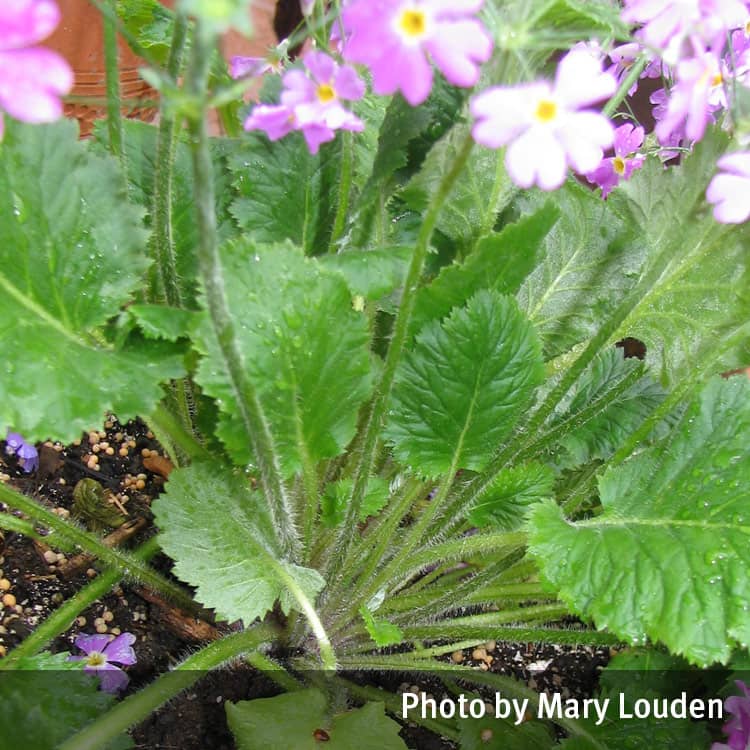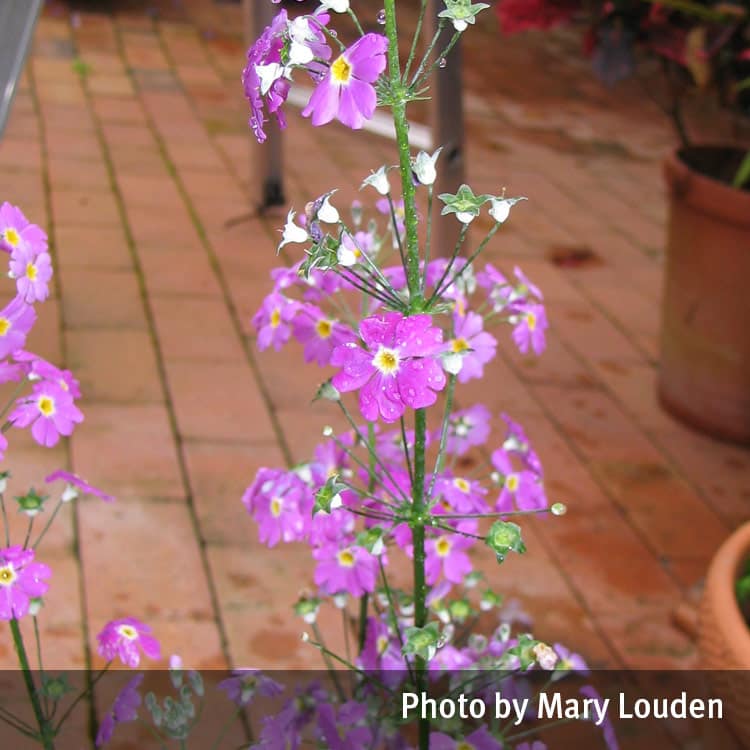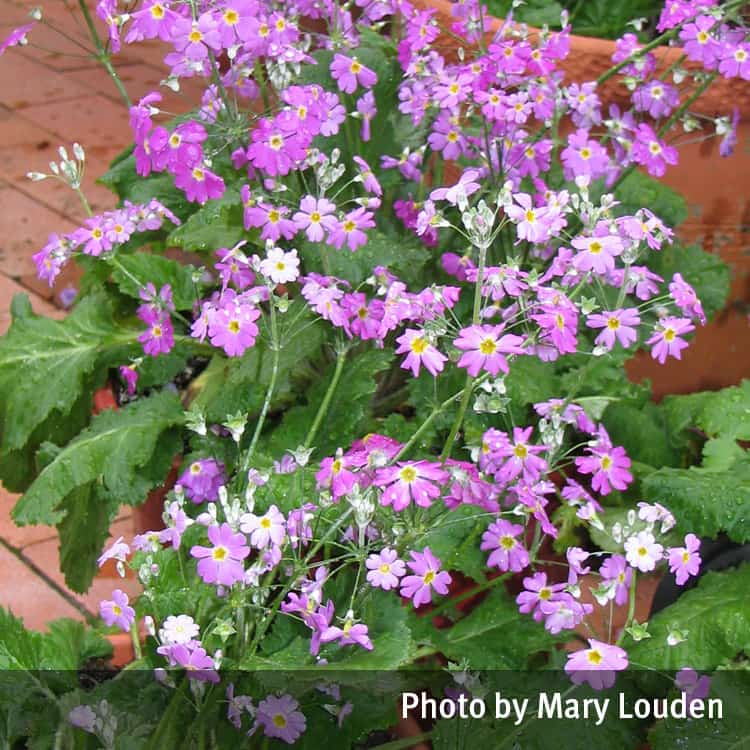For eye exposures rinse the eye with water for 15 minutes. Seek medical attention if eye is red or sore.
Description
An annual or short-lived perennial herb cultivated as a pot plant or garden ornamental.
Flowers can range in colour from white to pink and purple, as well as shades of yellow and orange, usually with a yellow centre. The flowers are either in tiered whorls or clusters at the end of a leafless stem.
The green leaves form a basal rosette, sparsely to softly hairy, with distinctive wrinkled venation, are rounded in shape with a crenate or notched margin.
Toxicity
Symptoms
Mild to severe skin reactions can occur, usually after the plant has been handled. The irritant can be transferred from the hands to other parts of the body – especially the face, mouth and eyes. Symptoms can include burning, redness, itching, swelling and contact dermatitis.
Eye contact may cause redness and swelling.
Images



Details
Common name: Primula
Botanical name: Primula species (includes P. malacoides, P. obconica, P. floribunda, P. forbesii, P. sinensis)
Other common names: Fairy primrose, German primrose, poison primrose, buttercup primrose, baby primrose, Chinese primrose.
Family: Primulaceae
General description: An annual or short-lived perennial herb cultivated as a pot plant or garden ornamental.
Flowers: Flowers can range in colour from white to pink and purple, as well as shades of yellow and orange, usually with a yellow centre. The flowers are either in tiered whorls or clusters at the end of a leafless stem.
Leaves: The green leaves form a basal rosette, sparsely to softly hairy, with distinctive wrinkled venation, are rounded in shape with a crenate or notched margin.
Fruit/Berries: The fruit is a capsule.
Last updated: July 2023